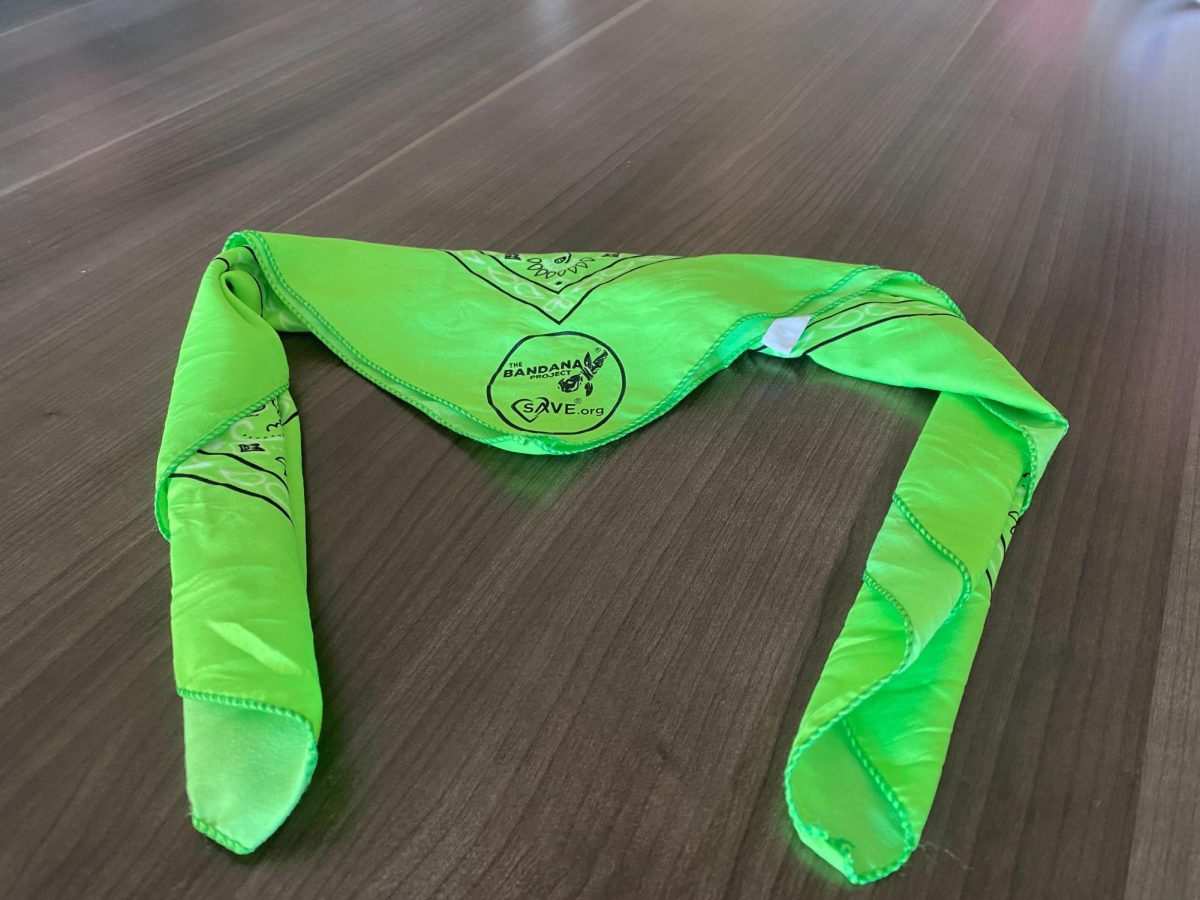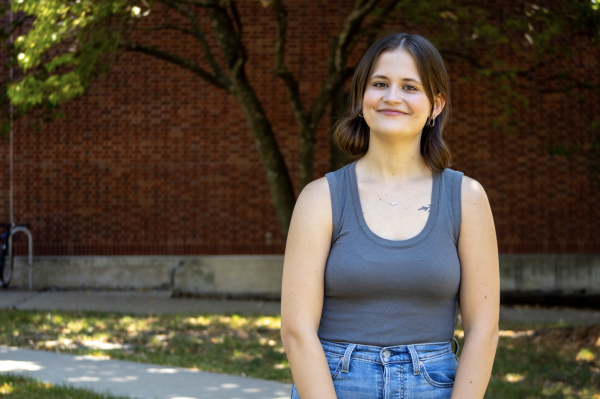During her first year of high school, Co-President of the Green Bandana Project at Drake Rylie Schutz almost lost a close family member to suicide. Following this event, she joined her high school’s chapter of the Green Bandana Project, where she held leadership positions for the next four years. Two years after joining, she almost lost her best friend as well.
“That was really hard on me emotionally, but then it really pushed me to be, like, ‘I need to stay with this, I need to let other people know,’” Schutz said. “For me, this program, my whole why is I just want people to know that they’re meant to be here.”
The Green Bandana Project is a national organization inspired by “Dan’s Bandana Project,” which was created in 2014, according to their website. Founder Dr. Betsy Gerbec started the project after losing her son to suicide. The green bandana was his signature accessory, Schutz said.
At Drake, anyone who completes Question, Persuade, Response (QPR) training will be eligible to participate in the Green Bandana Project. This training teaches participants how to start conversations relating to mental health and what resources are available to those who are struggling, Schutz said. Participants receive a certification afterward that is valid for two years.
“You learn how to be an approachable peer for those who may approach you with mental health issues,” Schutz said. “After that, we have an online module that you’ll have to do on Blackboard. After that, you receive a bandana that’s branded so that people know you’re an approachable peer, and it’s more of a tangible sight.”
QPR training also teaches participants how to take care of themselves while they are helping someone who is struggling with their mental health. The training provides resource packets containing cards and brochures, Co-President Grant Peltier said.
“If you’re having a challenging time, [you can] reach out to somebody with a green bandana because they will also get a resource packet after the QPR training,” Peltier said. “If you’re unable to talk to somebody right then and there, [we’re] able to give them something so they’re able to reach out to other people if [we] can’t help them.”
Schutz and Peltier are currently in the process of launching the Green Bandana Project as a student organization at Drake. There are currently about 40 to 45 people interested, Schutz said. They are working on making QPR training more accessible and forming an executive board. Peltier said that their goal is to order bandanas and resource cards for participants starting next semester.
“Being able to come to campus and see bandanas on backpacks I think will definitely help with the sense of community at Drake and show other people are struggling with the same thing,” Peltier said.
Peltier started his high school’s Green Bandana Project his junior year. His school won a national award for the project, and he had the opportunity to represent all the high schools from his county in Minnesota. During his first two years at Drake, he tried to found a branch on campus but encountered challenges due to COVID-19.
Peltier sees the green bandanas as a way of enhancing Drake’s current QPR training. If a student is struggling with their mental health, the bandanas allow the student to quickly find someone who is capable of helping them.
“QPR training is already going on here at Drake, but you don’t exactly know who’s QPR trained,” Peltier said. “While I’m sure a bunch of students are, you don’t know who you’re able to approach or talk to, and that’s why I think the green bandanas are so important. You’ll be able to see who’s had the training and all that.”
For Peltier, community is an essential aspect of the Green Bandana Projects, and creating that sense of community is a rewarding experience for him.
“You might come to class on a day where you’re not having a great day and see a bunch of bandanas around, and you’re able to see other students on campus feel the same way and care about this kind of stuff,” Peltier said.
Ultimately, Schutz and Peltier see the Green Bandana Project as a way of building community and creating healthy conversations related to mental health at Drake.
“The more people that we get interested in making the environment better, the more inclusive and the less stigmatized [about] mental health Drake will be,” Schutz said.








